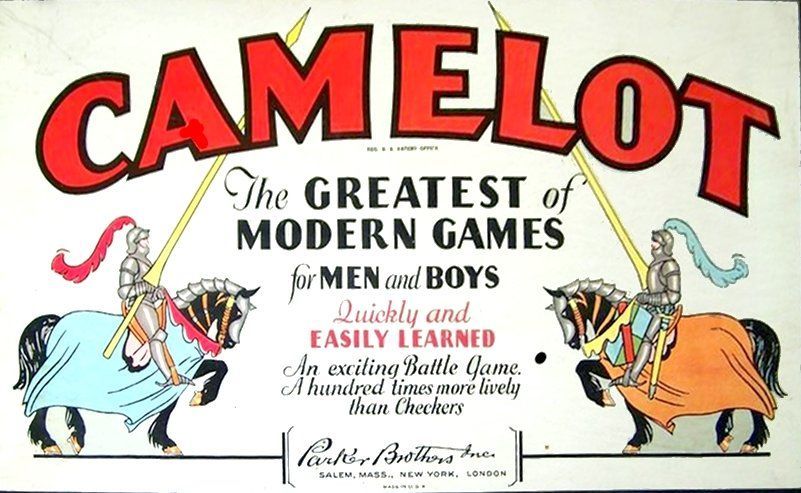Camelot (1930) Board Game
Camelot is an abstract strategy board game that was first released in in 1930. It is designed by George S. Parker, the creator of the popular board game Monopoly. The game has players competing against each other on a square grid board, using strategic movements to capture their opponent’s pieces.
Game Components of Camelot
How To Setup Camelot
To set up Camelot, each player places their 14 pieces on the board according to a specific layout. The knights and men are positioned in a way that maximizes strategic opportunities from the start. The board is divided into two main areas, with each player having their own castle at the top and bottom of the board.
Gameplay Mechanics and Game Objective
Player Experience
Camelot is designed to be highly tactical and easy to learn, making it accessible for novices while still providing depth for experienced players. The game is quick to play, lasting around 15 minutes, and requires strategic thinking from the very first move. The absence of chance elements ensures that the outcome is purely based on player skill and strategy.
Pros
Cons
Personal Thoughts on Camelot
Camelot is ideal for those who enjoy abstract strategy games that are quick to play but rich in tactical depth. It is a great option for players who want a game that is more complex than checkers but less daunting than chess. The game’s multiple variants add to its replay value, making it a solid choice for strategy game enthusiasts. However, its limited availability might make it challenging for new players to acquire.
We are supported by our audience. When you purchase through links on our site, we may earn an affiliate commission, at no extra cost for you. Learn more.

